In the ever-evolving world of environmental toxins hidden in processed foods and cosmetics, perhaps the most dastardly villains of all are the heavy metals. Firstly, there’s the notorious lead, which was found in old paints and turned out to cause cancer. Then there’s the mercury found in large fish, which has links to autism. Finally, there’s cadmium, an old disused pesticide which caused kidney and liver damage.
Heavy metals are a disaster for your health and they all have a strong tendency to trigger acne-causing inflammation. In my eBook Annihilate Your Acne, I advise every acne patient to dodge them…
…but it’s especially important to avoid arsenic. Why? Because while other heavy metals ruin your skin largely indirectly, arsenic possesses a single monstrous danger. Arsenic can massively ramp up your skin’s production of keratin, and hence, arsenic is a nightmare for clogged pores.
What is arsenic?
Arsenic is a heavy metal which once dominated the US pesticide market back in the early to mid-twentieth century.
Specifically, it was deployed against the boll weevil beetle that terrorised the cotton fields of the South USA, until one tragic day, the all-conquering cotton market took a sudden downturn. Hence, those fields were passed over to rice, fruit and vegetable farmers. Arsenic was abandoned as a pesticide in the mid-1960s, but substantial traces of it remained in the soil…
…and consequently, traces of arsenic behind to appear in the crops which took over those fields. Controversies over brown rice, apple juice and grape juice are still raging today, and worse, the arsenic residues washed into nearby lakes and rivers, polluting the pristine groundwater of heavily farmed areas.
For decades, arsenic was merely viewed as a mild threat, but in 2001, the Environmental Protection Agency decided to lower the maximum allowable level in drinking water from 50ug/l to 10ug/l, or 10ppb.
Why? Because arsenic is a strong carcinogen, linked to several types of cancer. Studies from Argentina and Chile, countries where arsenic groundwater contamination is a particularly rampant, show strong links to lung and bladder cancer. Skin and kidney cancers also have connections to arsenic.
Then there’s the mental damage. One study from 2004 found that children drinking 400ppb of arsenic in their drinking water had reduced IQ scores. An equally disturbing study analysed 300 Texans whose local water supply was moderately contaminated, and found poorer scores in memory, language and other areas of brain function.
The Natural Resources Defence Council estimates that 56 million Americans across 25 different states are drinking dangerous levels of arsenic in their local water. California, Arkansans and the southern central states are particularly hard hit, and worldwide, arsenic contamination is an epidemic in Bangladesh, Nepal, Mongolia, Chile and Argentina.
How does it clog your pores?
What’s interest is that the most obvious, easily visible signs of arsenic poisoning appear on the skin, and they’re called arsenical keratoses.
These are dark, unsightly growths of protein which can ultimately progress to tumours, and even skin cancer. Bangladesh is the world capital of arsenic poisoning, and here, arsenical keratoses are running rampant. That’s not all – arsenic poisoning is tightly linked to hyperpigmentation, sores, and more minor blotches. Doctors investigating the water quality of Bangladeshi villages always make inspecting skin deformities a top priority.
As for acne, the killer problem is that these deformities are all achieved through higher keratin production.
Alongside collagen, keratin is a vital structural protein, forming a large percentage of your skin, hair and nails. Collagen might provide the raw materials, but keratin’s main job is to bind the skin cells together, to keep your body’s coating strong and hardy…
…but the dark side is an unfortunate condition known as hyperkeratosis, where your skin’s keratinocytes manufacture far too much keratin. Shedding dead skin cells is a perfectly healthy process, as normally sweat and sebum wash them away from your hair follicles and pores. They end up in the environment or float away as household dust, and no harm is done.
Next – the 6 best vitamins and minerals for naturally clear skin
With too much keratin, however, these dead skins bind together instead. They form humungous, immovable clumps, clumps which stubbornly refuse to exit your skin. Instead, they stay in your pores, and when combined with sky-high oil production, there’s only one result – a pore-clogging recipe which even Gordon Ramsay would seethe with jealousy at.
Keratin is a healthy protein, but too much is an acne disaster zone.
Controlling keratin is a cornerstone clear skin strategy, one we discuss here regularly. Vitamin A, for example, is effectively the main ingredient of accutane and partially works by controlling keratin production (as well as decreasing sebaceous gland activity). The brilliance of zinc partly originates from lowering keratin.
For those reasons, the keratin-increasing powers of arsenic make it the worst heavy metal bar none.
Arsenic can 1) accelerate the activity of keratinocytes, 2) induce the growth factors behind keratinocyte expansion, and 3) increase the proliferation of keratinocytes. The much-feared arsenic keratoses are little more than a massive overgrowth of keratin confined to one narrow area.
What should an acne patient do?
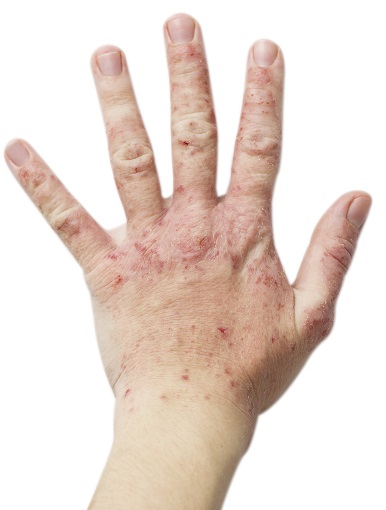 Put simply, you need to boot as much arsenic out of your life as humanly possible. You don’t need to eliminate all arsenic, firstly because it’s impossible, but secondly, because small traces are safe for acne. Again, the current allowable limit in US drinking water is 100ppb.
Put simply, you need to boot as much arsenic out of your life as humanly possible. You don’t need to eliminate all arsenic, firstly because it’s impossible, but secondly, because small traces are safe for acne. Again, the current allowable limit in US drinking water is 100ppb.
The World Health Organisation agrees, with a global 10ppb standard, but there’s currently a raging debate, with many insisting that 10ppb is too strict and others more cautiously calling for a reduction. In my opinion, 10pbb is almost certainly too high for acne, as the fearful study above found lowered IQ scores in in children from just 5ppb.
Considering that children are smaller by bodyweight, and considering several other nasty studies using small intakes, my recommendation is that a pimple-covered adult should consume no more than 7ppb of arsenic per day.
Also remember that organic arsenic is significantly safer in the human body. This form is a mixture of carbon and arsenic, and for animals like ducks and horses (and maybe the offspring of ducks and horses), it’s an essential dietary mineral. Overdoses are still possible, but are basically irrelevant for any hardworking acne patient.
Inorganic arsenic, meanwhile, is 500 times more toxic in the human body. It’s this organic arsenic which is plaguing rice and apple fields and unleashing the dark forces of skin problems, cancer, and suppressed IQ scores upon the world. Specifically, the deadliest forms are arsenic 3 and arsenic 5. Keep that difference at the back of your mind.
Rice – an arsenic-laced minefield
Onto the sources now, and there’s been a great deal of media stories recently about arsenic contamination in rice.
It’s true, all of it, as the panic started with an ominous Consumer Reports investigation back in 2012. This noble group tested numerous rice brands from numerous regions of the country, including both white and brown. Here’s what they found…
- “In virtually every product tested, we found measurable amounts of total arsenic in its two forms. We found significant levels of inorganic arsenic, which is a carcinogen, in almost every product category, along with organic arsenic, which is less toxic but still of concern.”
The average US citizen eats 12 grams of rice daily, but among Asian Americans it shoots up to 115 grams, with Hispanic and black consumers also eating more. According to this 2007 study, 115 grams of rice could reach or even surpass the fateful drinking water arsenic standard of 10ppb per day.
Just 58 grams would give you 5ppb of arsenic, on top of the accidental consumption from drinking water. Moreover, Consumer Reports discovered that 42% of the arsenic in rice was inorganic. The hardline statistic – rice eaters had 44% higher bloodstream arsenic than non-rice eaters.
How rice and arsenic became acquainted
The first explanation for rice’s dark secret is simply the legacy of arsenic-based fertilisers in cotton fields. The cotton-munching boll weevil beetle was a true nemesis of farmers in its time, but arsenic killed them so excellently that farmers blasted their fields without mercy.
It happens that a particularly large portion of rice fields, particularly in the southern US, are retired cotton fields. The rice plant absorbs arsenic into its roots with particular hunger, supposedly at 10 times higher levels than other grains like wheat.
The second key issue, meanwhile, is farmers’ fertilisers. In 2012, three Arkansas rice farmers initiated lawsuits against the drug Company Pfizer, Tyson Foods (chicken salesmen), and three Arksansas livestock feeding operations. Why?
Because Pfizer was the manufacturer of a drug named roxarsone, one of the only four arsenic-based drugs approved for sale in the US. Roxarsone is fed to chickens and livestock for three reasons: 1) to give the chicken a pink and fresh tone, 2) to prevent an intestine infection in chicken called histomoniasis, and 3) to accelerate their growth to Godzilla proportions. The average chicken fed roxarsone becomes so huge that it can only walk a handful of steps without total exhaustion.
That of course, is exactly how producers like it, and in 2007, 70% of US battery chickens received roxarsone (brand name 3-nitro). Consequently, almost all chicken manure sold as fertilisers to US farmers ended up being an arsenic syrup..
When spread across fields, this arsenic was rapidly sucked into the plants’ roots once again. That’s why rice farmers were so furious, and that’s partly when the arsenic contamination of rice fields has barely decreased, despite being outlawed as a pesticide decades ago. Tyson Foods insisted that they hadn’t used roxarsone since 2004, and fortunately, its manufacturers Fleming Labs and Zoetis have now voluntarily suspended its production. Two other arsenic-based drugs, carbarsone and arsanilic acid, are also on the exile list…
…but roxarsone’s career as a livestock feeder kicked off in the 1940s. Consequently, the arsenic manure has had decades to accumulate in rice field soils.
Never fear – clean rice is available
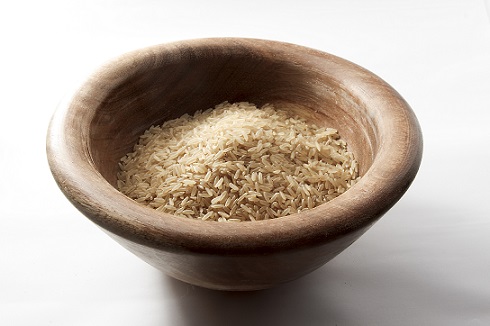 Firstly, I don’t advise you or any acne sufferers to gorge on rice anyway. It’s too high in natural carbohydrates and it’s nutritionally bereft.
Firstly, I don’t advise you or any acne sufferers to gorge on rice anyway. It’s too high in natural carbohydrates and it’s nutritionally bereft.
That said, white rice is a strong source of carbohydrates if you’re a heavy exerciser, because it lacks the lectins and gluten found in inferior grains like wheat. It’s a very pure carb source. Therefore, check out these observations from Consumer Reports:
- In white rice grown in Arkansas, Louisiana, Mississippi and Texas, 76% of US production, total arsenic and inorganic arsenic was much higher than rice samples from elsewhere. Californian rice was particularly clean.
- Using the average of each rice brand, brown rice contaminated significantly more total and inorganic arsenic than white rice every single time.
- As for brands, Martin Long Grain Brown rice ranked first for inorganic arsenic per serving, with Della Basmati Brown, Carolina Whole Grain Brown, Jazzmen Louisiana Aromatic Brown, and Whole Foods’ 365 Everyday Value Long Grain Brown in close pursuit.
- Ready to eat cereals were under a cloud of suspicion, as Barbara’s Brown Rice Crisps contained inorganic arsenic levels of 5.9 to 6.7 micrograms per serving. The cleanest cereal tested was Kellogg’s Rice Krispies (containing white rice), with 2.3 to 2.7 micrograms.
From that data, two clear strategies are available to you. Firstly, ditch the brown rice. We discussed in my eBook how contrary to popular belief, brown rice is worse for your skin because it retains all the natural plant toxins.
White rice may lack magnesium and iron, but the toxins are removed with the bran, where arsenic tends to gather. Cereals derived from white (like Kellogg’s above) also safer.
7 acne-clearing topical treatments which are 100% natural
Secondly, Californian rice easily beats rice from other corners of America. Californian basmati offers just 1.3 to 1.6pp of delicious, tangy arsenic per serving. Internationally, Bangladeshi rice is known to contain 80% inorganic arsenic, but Indian and Pakistani basmati rice were significantly cleaner.
Remember: if you don’t even eat rice, then arsenic is significantly less likely to be your acne nemesis.
Is chicken meat riddled with arsenic?
Speaking of chicken, the arsenic-laced drugs (roxarsone, carbarsone, arsanilic acid) farmers used to feed them once made their meat a nightmare. In 2011, FDA experiments revealed an abundance of inorganic arsenic hiding in the livers of barn house chickens.
Like the rice revelations, this sparked a nationwide panic. How was a drug based around a cancer-causing, brain-damaging ne’er do well even approved in the first place? Apparently, roxarsone contained mostly organic arsenic, and was therefore deemed harmless. But it later transpired that once inside chicken’s bodies and starved of oxygen, organic arsenic rapidly mutated into the inorganic form.
Hence, another study which tested 140 chicken meat samples from 2010 to 2011, detected approximately 2ppb of arsenic per serving, while organic chicken contained just 0.5ppb.
Is it inevitable then? Do you have to forgo the delights of chicken? The happy answer is no.
As we mentioned earlier, carbarsone and arsanlic are no longer being manufactured, and roxarsone has finally been suspended under the threat of legal action by the FDA.
Only nitarsone clings on, an arsenic-based drug fed to turkeys to control a deadly disease called histomoniasis. Hence, you should still duck any non-organic turkey meat flying towards your mouth (except maybe at Christmas), but even nitarsone is on the conveyor belt towards banning: late 2015 is the goal (according to the FDA).
10 years ago, chicken was a massive arsenic source for the average unaware American, but in another two, you won’t have to worry one jolt. In the European Union, roxarsone was outlawed in 1999. You’re only at risk if you live in Latin America, as in Mexico and Brazil, chickens are wolfing down arsenic like there’s no tomorrow.
In fact, it’s actually worsened recently, because the ban forced Zoetis and Fleming Labs to sell all their remaining roxarsone stocks to Latin American countries. The drug still survives in other developed countries, including Canada, Australia, New Zealand, and places like Indonesia and Malaysia.
If you’re an American or European citizen, however, a once insidious source of arsenic is about to be eliminated.
Note: it’s lucky that I don’t recommend standard CAFO-raised chicken for a whole host of other reasons anyway. You can read those reason in my eBook. The gist is that they develop inflammatory infections, and that the terrible soybean and corn diet makes their fat profile extremely unhealthy.
The curse of arsenic in fruit juice
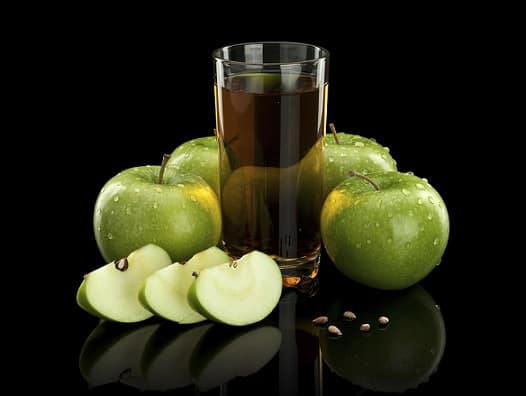 Fruit juice is easily the second biggest source of arsenic after rice products.
Fruit juice is easily the second biggest source of arsenic after rice products.
It’s a near identical theme: many apple orchards are sited on former cotton fields. The arsenic is sucked into the trees’ roots, and thus the apples on its branches, and remains in place when blended into juice.
Multiple fruit juices are dangerously close to the 10ppb drinking water limit, but apple juice and grape juice are particularly notorious. According to Consumer reports, for example, apple juice drinkers have 19% more arsenic in their urine compared to those who didn’t drink it.
It’s now accepted that adults, and especially children (who fruit juice companies market their wares towards) acquire much of their arsenic exposure through fruit juice. Therefore, I urge you to take two steps.
Firstly, you should drink less fruit juice anyway. All commercial brands are sugar bombshells, which makes them an inflammatory acne bombshell.
Secondly, before receiving organic status, farmers are legally required to purify their soils for many years. Thereafter, spreading on contaminated manures from chicken feed is strictly forbidden, as are artificial pesticides under suspicion of containing arsenic traces. Organic soil usually contains far less heavy metals, whether it’s arsenic, nickel or cadmium.
Next – the 6 best vitamins and minerals for naturally clear skin
In 2011, Dr Mehmet Oz tested a bunch of apple juice samples on his show and did a huge exposé of the unbelievably high arsenic levels. The organic samples were hailed as none of them contained above the 10ppb safe limit. The FDA decried the results, arguing that they foolishly tested for organic arsenic as well as inorganic. Nevertheless, the combined arsenic total was still significantly lower in organic juice.
Therefore, if you’ve got the money in hand, go organic! Going organic will slash your arsenic intake from juice to minimal levels. If fruit juice is only a fortnightly treat for you, then the regular version will probably be safe, but bear in mind that there’ll also be less nutrients and more added sugar.
Better yet, you could invest in a home juicer. Your homemade recipes will be much more nutritious unless you hurl an entire bag of sugar in, without being kept in a forgotten storage facility for months as steadily degrading concentrate.
Arsenic in the water supply
Almost everyone on Earth consumes some arsenic in their drinking water, whether organic or inorganic. It is a natural ingredient of the world’s crust, after all.
Some areas, however, are notoriously contaminated, and these hotspots include central Argentina, Chile Bangladesh, Nepal, parts of China, and Mongolia. The main US hubs are California and the southern central states. Fortunately, it’s easy to check the internet for the specific water concentrations in your local area.
If you’re already ducking and diving arsenic from fruit juice and rice then the quantities of arsenic in drinking water almost certainly won’t be a problem. The good news is that water companies face formidable FDA penalties if they fail to stick to 10ppb. Nevertheless, reducing your exposure is a wise move if you live in the aforementioned areas.
Your solution would be to 1) buy glass bottled/spring mineral water, which is effective, yet very expensive. Therefore, your second choice is to 2) buy a tap filter. There’s hundreds of cheap products nowadays which still remove tons of harmful pollutants such as arsenic.
For instance, this Home Master TMAFC Reverse Osmosis Water Filter is fantastic value, given that it’s a one-time purchase. Other options include a revolutionary osmosis filter or more conveniently, a Brita style filter, which doesn’t need to be bashed into the plumbing with a hammer. Your pour the water in gently, and then let the filter work its magic.
As a side note, US tap water is generally atrocious, featuring cocaine, rat poison, fluoride, lead, misplaced contraceptives, chemical weapon residues, pesticides, and even heart attack medication. US tap water cranks up inflammation so severely that I recommend a filter for all acne patients anyway, so arsenic aside, you should absolutely find a clean water supply.
Conclusion – say no to arsenic!
What’s fascinating is that in 1890s-era America, arsenic tablets were a widely beloved treatment for acne. Based on arsenic’s well-established keratin mischief, the preachers of that nonsense were clearly very misguided.
To summarise, it’s impossible to avoid low-level arsenic exposure in this day and age, and luckily, intakes of below 7ppb daily are perfectly safe for acne and health anyway.
Consuming massive quantities, however, is another story. Reduce fruit juice, choose your rice brands strategically, and depending on your location, invest in a water filter or buy spring water.
Don’t get panicky about tiny levels, but keep arsenic on a leash and your skin pores will thank you. It will never cure acne alone, but it’s a smart step to take.
Thanks for reading!
NEXT: discover the root causes of acne and banish your pimples forever
Thanks for reading!
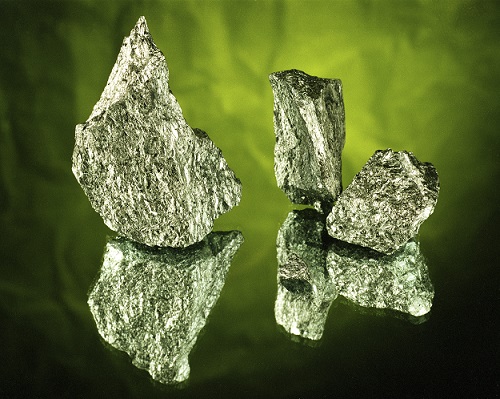
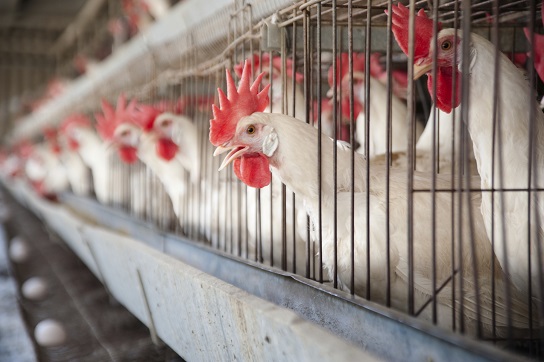
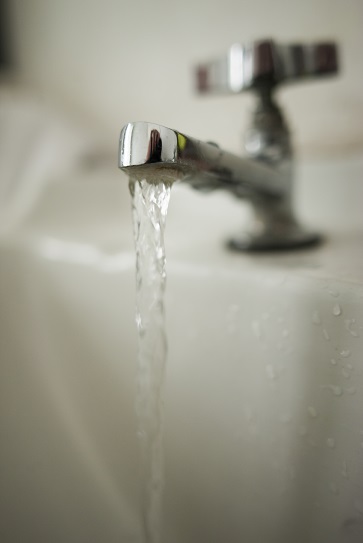
Another terrific article, you have been prolific recently. One thing you could add here is Spirulina as a way of getting arsenic out of the body.
Thanks! Spirulina: yes it’s good for chelating arsenic, but it’s a bit more complicated than that. You have to time it and cycle it correctly so that the arsenic isn’t redeposited elsewhere in the body. I may update this article in future with details about that.
That would be awesome, please do!
How do we get the old arsenic out of our bodies? Daily cilantro? How do we slowly rid?